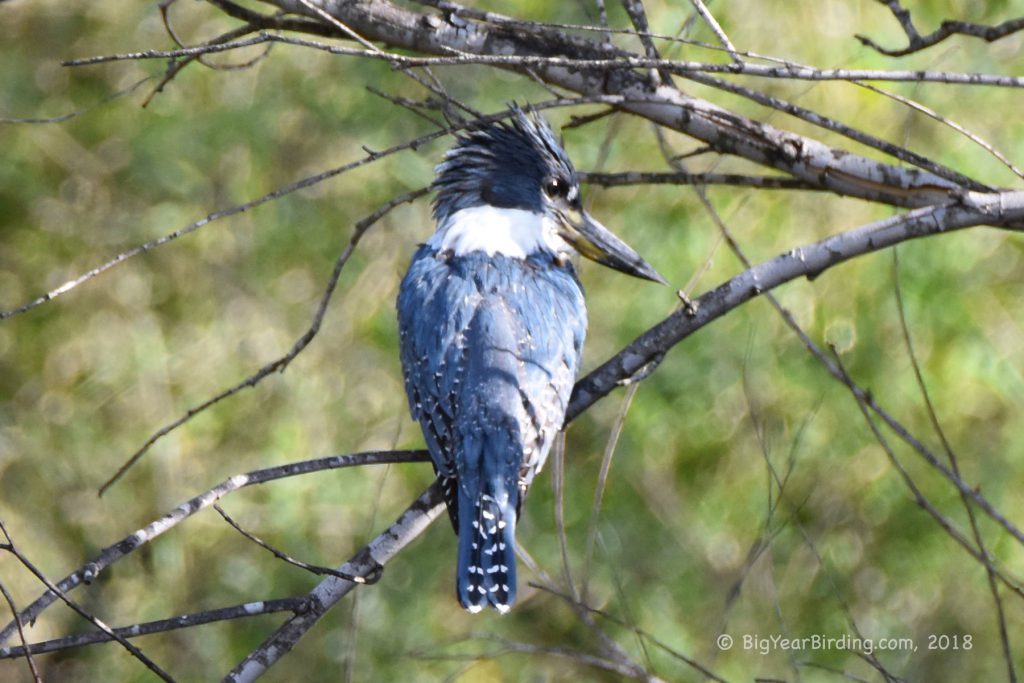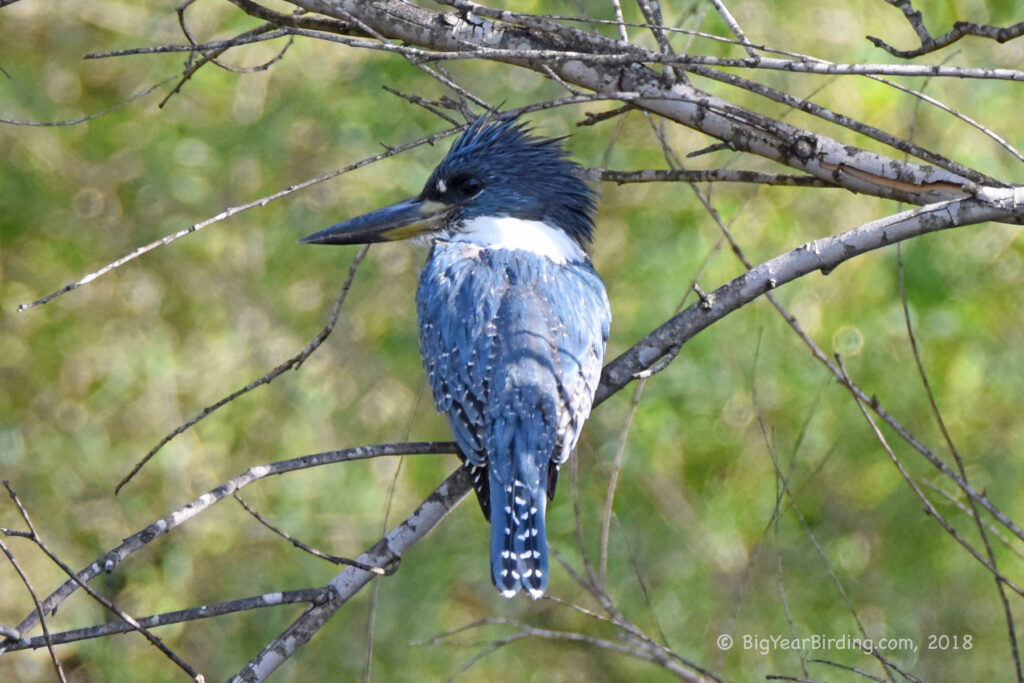
The Ringed Kingfisher (Megaceryle torquata) is a large, striking bird that is found throughout Central and South America. This impressive kingfisher measures around 16-18 inches (40-46 cm) in length and weighs between 9-14 ounces (255-396 g), making it one of the largest kingfisher species in the world. The male and female are similar in appearance, with both sporting a prominent shaggy crest and a large, sturdy bill.
The Ringed Kingfisher is unmistakable in the field due to its distinctive markings. The head, neck, and underparts are white, while the back and wings are a deep blue-gray. The bird’s most prominent feature is the broad, rusty-colored band across the breast, which is thicker in males than females. Another distinguishing mark is the white collar around the neck, which gives the bird its common name. The tail is short and squared-off, with white tips on the outer feathers.

The Ringed Kingfisher is a non-migratory bird, meaning it stays in its range year-round. Its range extends from Mexico to Argentina, with the largest populations found in the Amazon Basin. This species can be found near rivers, lakes, and other bodies of water, where it perches on branches or poles to search for prey. The Ringed Kingfisher is an opportunistic feeder, taking fish, crustaceans, insects, and even small mammals and reptiles.
Breeding occurs between March and June, with both the male and female involved in excavating a nest in a riverbank or sandy cliff face. The female lays 3-6 white eggs, which are incubated for around 24-25 days. After hatching, the young are cared for by both parents until they fledge at around 5 weeks old. The Ringed Kingfisher is a solitary bird, although pairs are sometimes seen during the breeding season.

Overall, the Ringed Kingfisher is an impressive bird with striking markings and a powerful build. Its non-migratory nature means it can be seen year-round in its range, making it a favorite of birdwatchers and nature enthusiasts throughout Central and South America.
